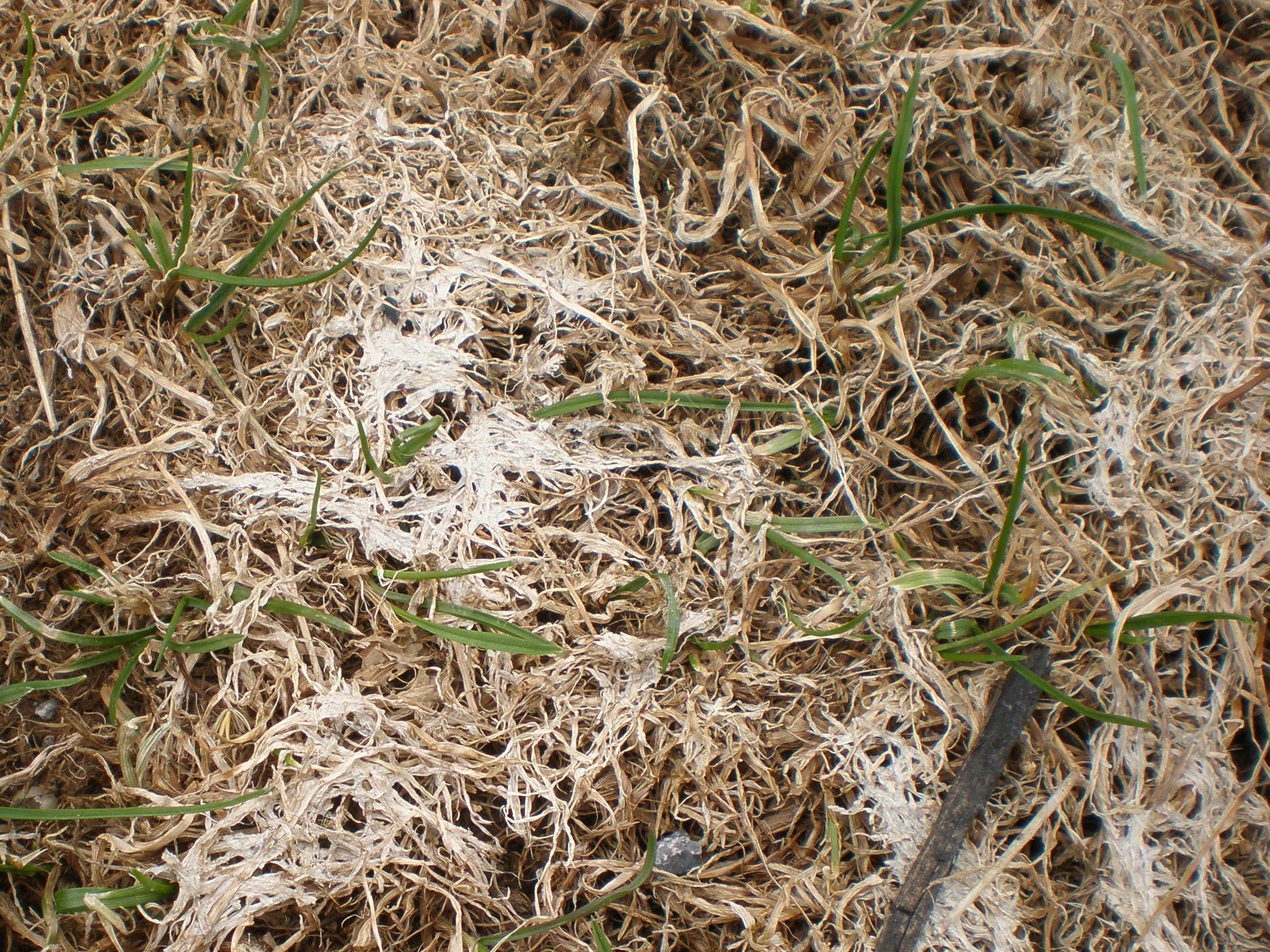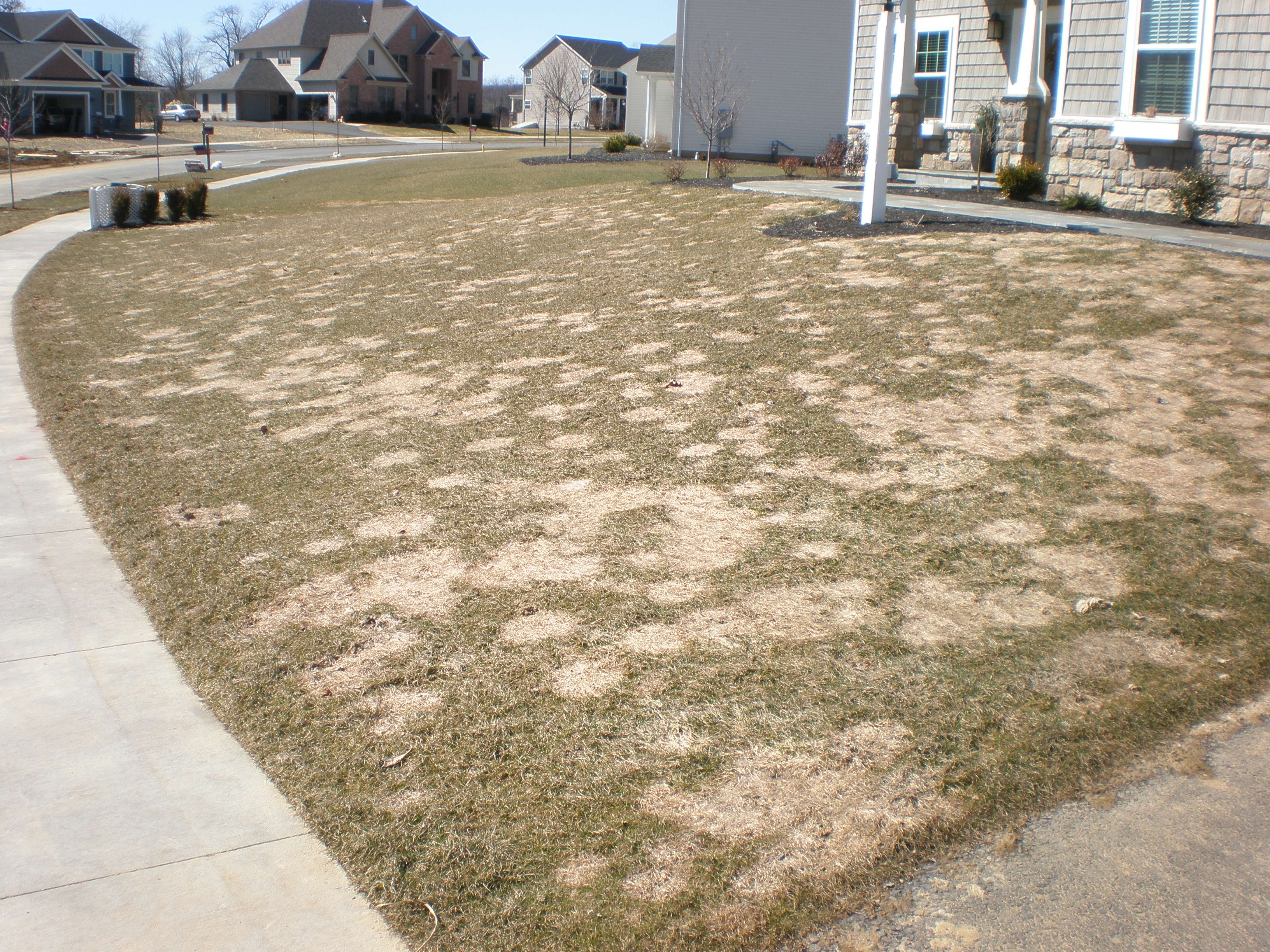Why do some lawns have more snow mold than others?
March 30, 2015 in Articles
 Peter Landschoot, Dept. Plant Science, Penn State University
Peter Landschoot, Dept. Plant Science, Penn State University
The winter of 2015 is finally over, and in its wake are brown lawns, many with bleached patches of matted, crusty grass. The patches are symptoms of a disease called snow mold, caused by one or more cold-tolerant fungi that attack plants under snow cover. The two most common snow mold diseases occurring in Pennsylvania are gray snow mold and pink snow mold, caused by Typhula incarnata and Microdochium nivale respectively.
Snow mold is most severe during winters with intense snowfall and long periods of snow cover, conditions experienced during January and February of 2015. Although air temperatures were extremely cold for much of the winter, temperatures underneath thick layers of snow may have been slightly above freezing, allowing enough moisture for snow mold fungi to grow and infect grass leaves. Snow mold disease activity likely intensified under snow cover during March as temperatures began to warm, and symptoms became visible as thick blankets of snow melted and exposed dormant turf.
Homeowners sometimes ask why their lawn is more severely affected by snow mold than other lawns in their neighborhood. The answer usually involves a combination of factors, including site conditions, the type and age of grass, and how the lawn is managed. Because snow mold is favored by thick layers of snow, the disease is most prevalent in turf areas with the greatest snow accumulation, such as along driveways, over the crest of a hill where snow drifts occur, and in areas shaded by buildings or trees. Although all cool-season grass species can be affected by snow mold, some cultivars used in lawn seed mixtures are more susceptible than others. Unfortunately, homeowners and landscape contractors rarely know which cultivars are highly susceptible until after the lawn is established and snow mold becomes problematic. Young turfgrass plants established in fall from seed do not have the full complement of disease resistance mechanisms needed to fend off the effects of fungal pathogens; thus, they often do not recover adequately from snow mold injury. Both newly-established and older lawns going into the winter lush and green, as a result of excess nitrogen fertilizer, can be severely damaged by snow mold.
 The good news is that the vast majority of lawns with snow mold will recover and fill in once temperatures warm later in the spring. Thus, most snow mold-affected lawns do not require reseeding, and can be managed without the use of fungicides. The exception may be newly-established lawns on high-value properties that are prone to snow mold injury. In such cases, a granular fungicide in late fall might be an economically-justified management practice. Fungicide applications in spring are useless, as the fungal pathogen undergoes desiccation and becomes dormant soon after snow melt.
The good news is that the vast majority of lawns with snow mold will recover and fill in once temperatures warm later in the spring. Thus, most snow mold-affected lawns do not require reseeding, and can be managed without the use of fungicides. The exception may be newly-established lawns on high-value properties that are prone to snow mold injury. In such cases, a granular fungicide in late fall might be an economically-justified management practice. Fungicide applications in spring are useless, as the fungal pathogen undergoes desiccation and becomes dormant soon after snow melt.
To reduce snow mold severity, keep turf mowed well into the fall. Non-mowed turf tends to lay over and mat under snow, providing a favorable habitat for snow mold fungi. Also, try to avoid creating long-lasting snow banks when removing and piling snow from sidewalks and driveways. When symptoms appear at snow melt in the spring, rake the damaged areas and break-up the crusted, matted leaves. Although raking will not speed turf recovery, it will improve the appearance of the lawn. Finally, use seed containing high quality turf cultivars when establishing new lawns. Although this does not guarantee less snow mold following a severe winter, better cultivars usually recover faster from winter injury and produce a heathier, more aesthetically-pleasing lawn throughout the growing season. Evaluations of cultivars of the major cool-season turfgrass species are reported annually through the National Turfgrass Evaluation Program (ntep.org).
[…] http://psuturf.com/2015/03/why-do-some-lawns-have-more-snow-mold-than-others/ […]